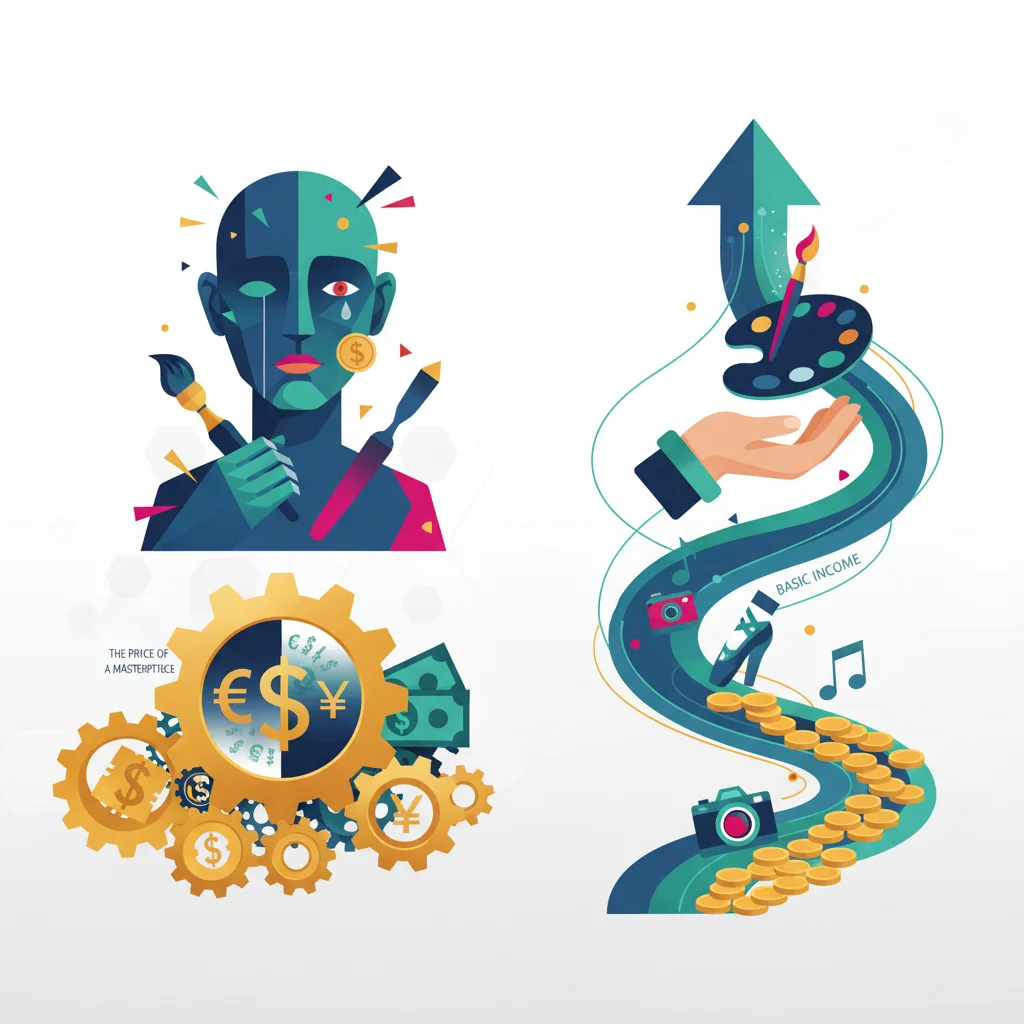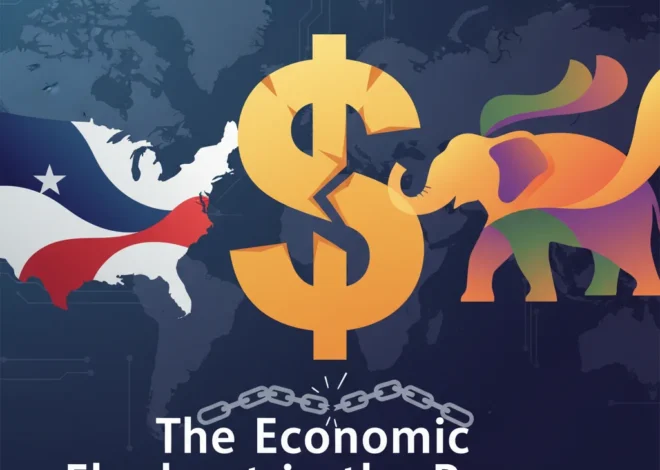
The Price of a Masterpiece: Unpacking the Economics of Basic Income for Artists
The Starving Artist: A Romantic Myth or a Market Failure?
The image of the “starving artist” is a deeply ingrained cultural trope—a romanticized vision of a creative genius sacrificing material comfort for their craft. But for countless artists, writers, and performers, the reality is far less poetic. It’s a world of precarious income, gig-to-gig uncertainty, and the constant struggle to balance creative pursuits with the need to pay the bills. This financial instability isn’t just a personal challenge; it’s an economic friction point that can stifle innovation and rob society of cultural enrichment.
Enter a bold policy experiment from Ireland. In 2022, the Irish government launched its Basic Income for the Arts (BIA) pilot scheme, a three-year program providing 2,000 randomly selected artists and creative workers with a no-strings-attached payment of €325 per week. The goal is to provide a foundational level of financial security, allowing creators the freedom to do what they do best: create.
While this initiative has been hailed as groundbreaking, a letter to the Financial Times by Lawrence Haar of The University of Brighton serves as a crucial historical reminder. This is not the first time a nation has attempted to build a financial floor for its artistic community. To understand the potential and pitfalls of Ireland’s experiment, we must look back to a fascinating, ambitious, and ultimately cautionary tale from the Netherlands: the Beeldende Kunstenaars Regeling (BKR).
A Ghost of Policies Past: The Dutch BKR Scheme (1949-1987)
In the aftermath of World War II, the Netherlands sought to rebuild not just its infrastructure but also its cultural soul. To support its struggling artists, the government introduced the BKR in 1949. The premise was simple and elegant: it was a social safety net that functioned as a unique form of state patronage. In exchange for a basic income, visual artists could sell their work to the state.
For decades, the BKR was a cornerstone of Dutch cultural policy. It provided thousands of artists with a stable livelihood, allowing them to experiment and produce work without the immediate pressures of the commercial market. The state, in turn, amassed a colossal collection of contemporary art, which was used to decorate public buildings, schools, and offices.
However, the program’s design contained the seeds of its own demise. By the 1980s, the BKR was facing immense strain. The costs had spiraled as more artists joined the scheme. Government warehouses were overflowing with an estimated 200,000 pieces of art, much of which was of debatable quality. Critics began to argue that the BKR, by removing the filter of market demand, was incentivizing mediocrity and creating a dependency culture. The direct transaction—art for income—led to a situation where the state was acting as a buyer of last resort, distorting the very nature of artistic production and valuation. In 1987, facing budgetary pressures and mounting criticism, the Dutch government terminated the scheme.
The Driving Test Backlog: A Surprising Lesson in Economic Efficiency and Financial Systems
A Tale of Two Schemes: Comparing Ireland’s BIA and the Dutch BKR
On the surface, the BIA and BKR share a common goal: to alleviate economic precarity for artists. However, a closer look reveals fundamental differences in their philosophy and mechanics, which may determine whether Ireland can succeed where the Netherlands ultimately faltered.
The following table breaks down the key distinctions between the two programs:
| Feature | Dutch BKR (1949-1987) | Irish BIA (2022-2025) |
|---|---|---|
| Mechanism | Transactional: A basic income provided in exchange for artworks. The state acted as a buyer. | Unconditional: A true Basic Income payment with no requirement to produce or surrender work. |
| Conditionality | High. Income was directly tied to the submission of art, creating a work-for-payment structure. | None. The payment is guaranteed regardless of artistic output or commercial success. |
| Primary Goal | To provide social assistance to artists while acquiring art for the state. | To assess the impact of a basic income on the arts sector, reducing precarity and enabling creative work. |
| Economic Model | State Patronage / Procurement Program. Distorted the art market by creating an artificial buyer. | Social Investment / UBI Pilot. Aims to empower individuals within the existing market. |
| Primary Criticism | Led to overproduction, questions of quality, and unsustainable storage costs. | Potential concerns over long-term cost, political sustainability, and defining “artist” for eligibility. |
The most crucial distinction lies in conditionality. The BKR was a procurement program disguised as welfare, creating a direct link between payment and product. Ireland’s BIA is a true basic income pilot, decoupling financial support from specific artistic output. This fundamental difference means the BIA is less likely to suffer the “state-subsidized mediocrity” critique that plagued the BKR. The focus is on empowering the artist, not acquiring the art.
Ireland’s approach implicitly trusts artists to be productive and innovative when freed from financial anxiety. It’s an investment in human capital. The return on this investment won’t be measured in the number of paintings in a warehouse, but in less tangible (yet arguably more valuable) metrics: cultural vibrancy, new creative enterprises, improved mental well-being, and Ireland’s global “soft power.” For investors and business leaders, this is a fascinating microcosm of a larger trend. As automation and AI disrupt traditional employment, UBI-style programs could become a key tool for managing economic transitions, not just in the arts but across many sectors. The BIA is a test case for a new kind of social contract, and its results will have implications far beyond the art world.
The Broader Economics of Creativity: From Market Failure to Financial Innovation
Why do we even need programs like the BIA? From a purely economic standpoint, the arts sector often exhibits classic signs of “market failure.” The value of culture is a public good—it benefits society as a whole, but its creators often struggle to capture that value financially. The `economics` of the creative industries are defined by high risk, uncertain demand, and a winner-take-all dynamic where a few superstars earn fortunes while the majority struggle.
Yet, the creative economy is a powerful engine of growth. A 2022 UNESCO report highlighted that cultural and creative industries generate $2.25 trillion in revenue and provide nearly 30 million jobs worldwide. A thriving arts sector fuels tourism, drives innovation in media and design, and enhances the quality of life that attracts skilled workers to a region. Investing in the arts isn’t just charity; it’s a strategic investment in a nation’s economic dynamism.
For those in `finance` and `investing`, the BIA signals a government’s commitment to nurturing this high-growth sector. While you can’t buy shares in the BIA itself, its success could create a more stable and productive creative ecosystem. This, in turn, can generate investable opportunities in related industries listed on the `stock market`, from media conglomerates and entertainment companies to architecture and design firms.
Solving the Market's Crossword: A Strategic Guide to Today's Financial Puzzles
Fintech, Blockchain, and the New Patronage
While governments experiment with top-down support, a parallel revolution is happening from the bottom up, driven by `financial technology`. The traditional `banking` and gallery system is no longer the only game in town for artists seeking to build a career. The fintech world is providing new tools that are democratizing funding and empowering creators directly.
- Crowdfunding & Membership Platforms: Services like Patreon and Kickstarter have become essential tools, allowing artists to build a community of supporters who provide a recurring, stable income—a private-sector version of a basic income.
- Fractional Ownership: Fintech platforms are emerging that allow investors to buy shares in high-value artworks, providing liquidity to the art market and new sources of capital for artists and collectors.
- Blockchain and NFTs: Non-Fungible Tokens (NFTs) represent a paradigm shift in the ownership and `trading` of digital art. Using `blockchain` technology, artists can prove provenance, sell digital works directly to a global audience, and program smart contracts that automatically pay them a royalty on every future resale—a persistent revenue stream that was previously impossible.
This wave of `fintech` innovation represents a market-driven counterpoint to the state-led model of the BIA. It places power directly in the hands of artists and their audiences, creating a decentralized and global ecosystem for creative commerce. The future of arts funding will likely not be an either/or choice between state support and market solutions, but a hybrid model where both coexist. A program like the BIA could provide the foundational stability for an artist to take creative risks and explore these new fintech-powered avenues for monetization.
Beyond the Boarding Pass: Ryanair's Digital Gambit and Its Ripple Effect on Finance and Investing
Conclusion: An Investment in Our Creative Future
Ireland’s Basic Income for the Arts is far more than just a welfare program. It is a sophisticated economic experiment that learns from the successes and failures of the past, particularly the cautionary tale of the Dutch BKR. By choosing an unconditional, trust-based model, Ireland is betting on the intrinsic drive and ingenuity of its creative community.
The lessons from this pilot will resonate across the global `economy`. It forces us to confront fundamental questions about how we value creative work, how we support non-traditional careers in an increasingly automated world, and what role the state should play in fostering innovation. Whether through government initiatives like the BIA or disruptive `financial technology` like the blockchain, the goal remains the same: to transform the “starving artist” from a romantic myth into an obsolete relic of the past. This is an investment not just in art, but in the resilience and dynamism of our future economy.


